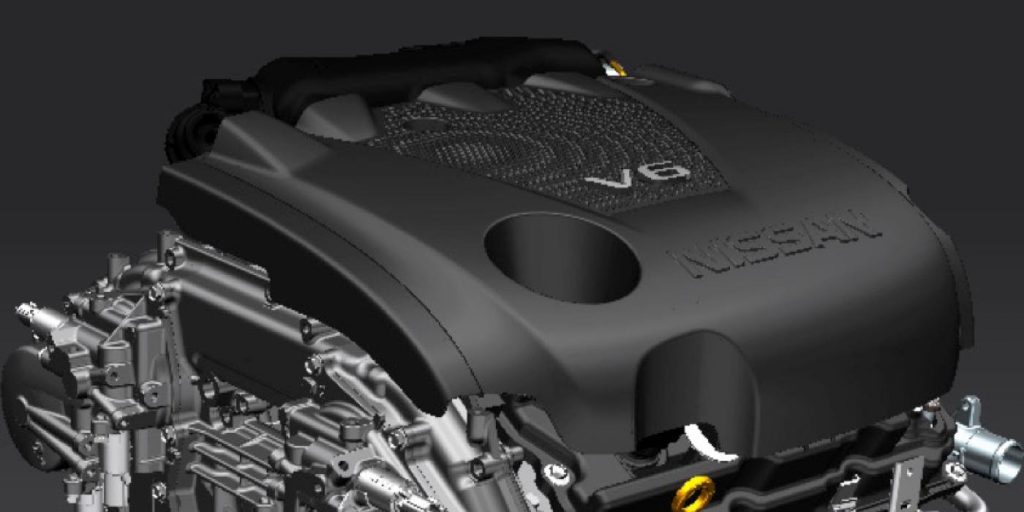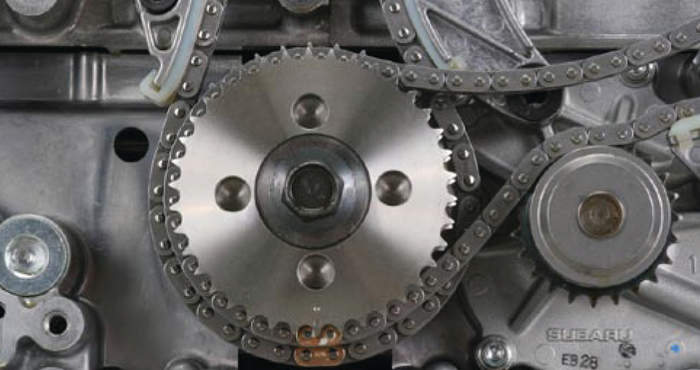The traditional setup for a water pump is to be turned by the accessory belt drive system. It is simple and effective and allows for service if the water pump fails. But, its one disadvantage is the amount of force the belt puts on the bearing and seals of the pump.
One solution is to have the timing chain power the water pump. Since the chain has teeth that turn the pump, less force is put on the shaft, theoretically allowing it to last longer. But, since the pump is part of the engine’s valvetrain, servicing the pump is difficult.
At the top of the list of the most challenging water pumps to replace are those found in the Nissan VQ-Series V6 engines. The pump is turned by the timing chain and is nestled in the engine block. No matter if the engine is mounted transversely or longitudinally, the job requires significant labor.
The VQ35 series of engines can be found in 2001-current Nissans. Book time on this job can range from 2.0-3.0 hours, depending on the model and layout. Unfortunately, there are no shortcuts.
The first sign of water pump bearing failure will be a coolant leak coming from a hole on the block by the air conditioning bracket. This hole leads to the weep hole on the pump. The hole is between two seals that separate the oil on one side and the coolant on the other. If the outer O-ring fails, it will leak coolant into the front cover area that is connected to the oil sump. This could mimic a head gasket leak.
When replacing the pump, pay close attention to the O-rings. These need to be lubricated with either oil or coolant. The rings need to be able to seal and move small amounts as the block heats and cools. Do not use silicone or other sealants. These can block the weep hole in the block.
Before starting the job, set the engine to top-dead-center. This can prevent the cams and engine from wanting to flop over when you release the slack on the chain. If you exceed 20° with the tensioner slacked, it could cause the chain to jump. When installing the pump, make a gap between the water pump gear and timing chain by turning the crankshaft pulley approximately 20° clockwise. When removing the chain tensioner, be careful not to drop bolts inside the chain case. When installing the new pump, install new O-rings onto the water pump with no sealants. Just apply a light coating of engine coolant.
When the engine is first started, you may hear the timing chain rattle at first. Rev the engine to 3,000 rpm to purge the air from the chain tensioner.














